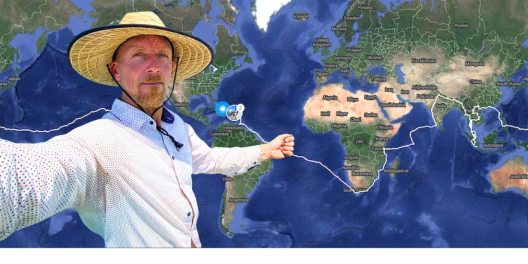There’s change in the air. With the pandemic and war in Europe, we’re being pushed to adapt socially and economically. And with the changing climate, we have to adapt ecologically.
Thankfully, that’s something humans do well. We’ve been adapting for millions of years. And we can learn a lot by looking at how we adapted in the past.
Lucky for us, Indigenous fishers from 5,000 years ago left us clues to our future. And they’ve been dug up by researchers from the University of Victoria (UVic), University of British Columbia (UBC), and Simon Fraser University (SFU).
The researchers collected fish bones in the ancient First Nations villages of Ts’ishaa and Huu7ii in Barkley Sound. These bones date from about 3000 BC to 1700 AD.
Certain fish like certain water temperatures. Over those 5,000 years, the ocean temperatures rose ever so slightly. And as the temperature changed, so did the fish that hung out near Barkley Sound.
Tracking the changing fish bones gives scientists new intel into how Indigenous people adapted to warming waters. The kinds of fish stayed the same as the temperature rose, but some started to outnumber the others, like salmon and dogfish.
And that’s information we can use in the present.
Dylan Hillis is a UVic anthropology master’s student and the study’s lead author. Based on the types and amounts of fish people caught over those 5,000 years, he figures the mean temperature of the catch (MTC) rose by about 0.3ºC to 0.7ºC.
That doesn’t sound like a lot, right? But small changes have big effects on ocean creatures.
And this kind of historical evidence can hugely impact our understanding of ocean temperatures and how people adapted over time.
Dr. Anne Salomon is a co-author from SFU. “Intensifying marine heat waves will profoundly affect our coastal oceans and the food they can produce,” she said.
“Looking back through time over five millennia not only improves our baseline to assess change, it offers a window into how humans adapted to change and can help guide what resilient human-ocean relationships could look like in the future.”
This is not the only VanIsle site we can gain valuable information from. Settlers have only been keeping records for 100 years. Indigenous people and villages hold data that goes back thousands.
“There are Indigenous heritage sites everywhere on the BC coast that hold valuable historical data that pre-dates records kept by settlers,” says researcher Iain McKechnie. “This creates additional opportunities for First Nations to weigh in on marine planning, climate adaptation, and fisheries management.”
William Cheung is the UBC Institute for the Oceans and Fisheries professor who co-developed the MTC method. He says the ocean, all life within it, and thus the way we consume it have always been changing.
“The only difference is that today, due to humans’ carbon dioxide emissions, we’re increasing ocean temperatures at an unprecedented rate,” Cheung said.
“The consequences of warming oceans will be much higher than they were in the past.”
Ken Watts, elected Chief Councillor of Tseshaht First Nation, echoed this. He says that knowledge from the past can greatly influence our present. The key to this is to take action now.
“This study can show we adapted, and it now teaches us that we need to plan to adapt again as our world is evolving daily; we hope this will influence our discussions with government, but more importantly, ensure we leave our children and future generations with a better world than that which we live in now.”












